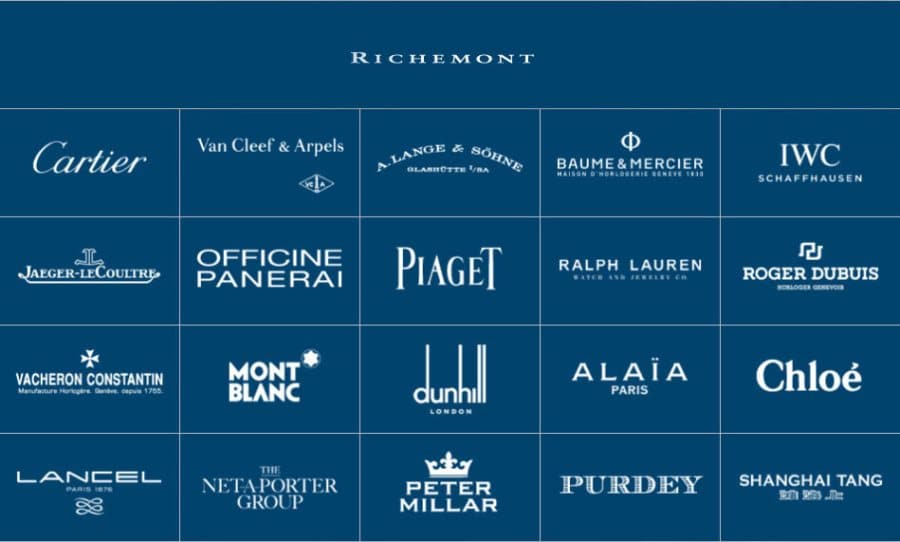[:fr]Jusqu’au début du XXe siècle, l’industrie horlogère était principalement constituée d’entreprises et de manufactures qui travaillaient chacune dans leur coin, indépendamment les unes des autres. Mais le nouveau siècle a drainé son lot de crises économiques, et ces crises ont poussé les firmes horlogères (notamment suisses) à se regrouper pour mieux affronter les difficultés et faire face à la concurrence. Ces groupes horlogers sont, aujourd’hui, les principaux leaders du secteur des montres.
Des groupes horlogers pour mieux affronter les difficultés
En matière d’économie comme ailleurs, l’union fait la force. Dès les premières décennies du XXe siècle, les entreprises d’horlogerie le comprennent bien. Surtout lorsque la crise de 1929, démarrée aux États-Unis, se transforme en une Grande Dépression qui inonde l’économie planétaire, et jusqu’aux charmantes et calmes vallées du Jura où l’industrie horlogère s’est installée.
Les fabricants de montres sont trop petits, trop faibles, trop dispersés. La crise les frappe de plein fouet, menaçant sérieusement leur survie ; elles répondent par un dumping social douloureux, leur seule et unique arme pour lutter contre l’invisible ennemi. Dans la tourmente, la Confédération et les principaux établissements bancaires créent l’ASUAG en 1931, ou Société générale de l’industrie horlogère suisse : une société holding qui regroupe plusieurs fabricants de pièces et d’ébauches, ainsi que des marques emblématiques (dont Hamilton, Longines, Mido et Rado).
L’ASUAG n’est pas exactement le premier exemple de groupe d’horlogerie. En 1925, la marque Omega subit encore les conséquences économiques du conflit mondial et se laisse engluer dans une série de mouvements sociaux internes qui plombent les comptes de la manufacture. Pour rebondir, Omega s’associe avec Tissot et relance ainsi la machine. Les deux marques créeront ensemble, quelques années plus tard, la holding SSIH (Société suisse pour l’industrie horlogère), vouée à s’agrandir. L’ASUAG ne viendra qu’après ce coup d’essai, mais en imposant un groupe horloger d’une toute autre ampleur.
Ce modèle sert de base au grand regroupement des années 80. Confrontés à une nouvelle crise (celle dite « du quartz ») et menacés d’extinction par le déferlement des montres électroniques en provenance du Japon, l’ASUAG et la SSIH s’allient pour former un vaste ensemble : la SMH (Société de microélectronique et d’horlogerie, en 1983, grâce aux efforts consentis par les banques. Ce groupe horloger prendra en 1998 le nom – plus connu aujourd’hui – de Swatch Group.
 Des conglomérats puissants dans le secteur du luxe
Des conglomérats puissants dans le secteur du luxe
Toutefois, les groupes d’horlogerie ne se forment pas qu’à la faveur des crises et des difficultés du secteur. La tendance, plus récente, est au rachat des manufactures et des marques par des groupes plus puissants, généralement positionnés sur le segment du luxe. Depuis les années 90, on assiste ainsi à des acquisitions de marques de montres par des conglomérats comme LVMH, Kering (ex-PPR) ou Richemont. Des groupes horlogers qui se constituent non plus en période de marasme, mais au contraire sur fond de bonne santé économique.
Comment expliquer cette tendance ? Il faut, pour cela, comprendre que l’industrie horlogère s’est scindée en deux autour des années 90/2000, entre la consommation de masse d’un côté et la production de prestige de l’autre. Pour survivre à l’ère des montres bon marché, les marques haut de gamme (notamment suisses) se sont repositionnées afin d’occuper résolument le segment du luxe, proposant des modèles allant de quelques centaines à plusieurs centaines de milliers d’euros.
Ainsi, les marques les plus prestigieuses du secteur sont devenues, en peu d’années, des appuis stratégiques pour les grands groupes du luxe qui souhaitaient glisser un pied dans le bain horloger. De sorte que les conglomérats comme LVMH ou Richemont se sont offerts des marques importantes (De Beers, TAG Heuer ou Zenith pour le premier ; Cartier, Jaeger-LeCoultre ouVacheron Constantin pour le second) afin d’intégrer ce secteur très prisé en entrant par la grande porte.
Après tout, produire des montres haut de gamme, c’est bon pour l’image de marque. C’est pourquoi les groupes horlogers, dédiés uniquement à cet art, se partagent le marché avec des entités plus hétérogènes mais tout aussi imposantes dans le secteur de l’horlogerie.
Les groupes d’horlogerie les plus emblématiques et leurs marques de montres
Parmi les groupes horlogers les plus réputés, citons :
- Festina Lotus S.A. – un groupe spécialisé dans les montres d’entrée de gamme, qui réunit les marques Calypso, Candino, Festina, Jaguar et Lotus Watches.
- Rolex – la marque de montre la plus célèbre, lancée par Hans Wilsdorf, forme un mini groupe horloger avec Tudor.
- Swatch Group – fondé en 1983 à partir de l’ASUAG et de la SSIH par Nicolas Hayek, sous le nom de SMH. Sa marque emblématique n’est autre que Swatch, la montre suisse à prix abordable qui a révolutionné l’industrie horlogère. Autres marques : Blancpain, Breguet, Hamilton, Jaquet Droz, Longines, Mido, Omega, Pierre Balmain, Tiffany, Tissot…

Parmi les groupes de luxe possédant des marques de montres emblématiques :
- Kering – l’ex-PPR possède les marques Boucheron, Gucci, Yves Saint-Laurent, Girard Perregaux et JeanRichard.

- LVMH – c’est le premier groupe de luxe au monde et il est français. LVMH regroupe, dans le domaine de l’horlogerie, les marques Chaumet, De Beers, Dior, Fred, Louis Vuitton, TAG Heuer et Zenith.

- Richemont – fondé en 1988 par Johann Rupert. Parmi les marques de montres les plus importantes du groupe, citons Baume & Mercier, Cartier, Jaeger-LeCoultre, Montblanc, Piaget et Vacheron Constantin.

Après les groupes d’horlogerie, partez également à la découverte des manufactures de montres, des marques de montres, et de l’industrie horlogère ![:en]Until the beginning of the twentieth century, the watch industry consisted mainly of companies and manufactures that each worked in their own corner, independently of each other. But the new century has drained its share of economic crises, and these crises have pushed the watch companies (especially Swiss) to regroup to better face the difficulties and face the competition. These watch groups are today the main leaders in the watch industry.
Watch groups to better face the difficulties
In economy as elsewhere, the union is strength. From the first decades of the twentieth century, watch companies understand it well. Especially when the crisis of 1929, started in the United States, turns into a Great Depression that floods the global economy, and the charming and quiet valleys of the Jura where the watch industry settled.
Watch manufacturers are too small, too weak, too scattered. The crisis hits them hard, seriously threatening their survival; they respond with painful social dumping, their one and only weapon against the invisible enemy. In the midst of turmoil, the Confederation and the main banks set up ASUAG in 1931, or Societe Generale de l’industrie suisse suisse: a holding company that groups together several parts and blank manufacturers, as well as iconic brands (including Hamilton , Longines, Mido and Rado).
ASUAG is not exactly the first example of a watch group. In 1925, the Omega brand still suffers the economic consequences of the world conflict and is engulfed in a series of internal social movements that plague the accounts of the manufacture. To bounce back, Omega joins forces with Tissot and revives the machine. The two brands will create together, a few years later, the holding company SSIH (Swiss Society for the Watch Industry), which is set to expand. ASUAG will only come after this first try, but by imposing a watch group of a different scale.
This model is the basis of the great group of the 80s. Faced with a new crisis (the so-called « quartz ») and threatened with extinction by the surge of electronic watches from Japan, ASUAG and SSIH are allied to form a vast ensemble: the SMH (Society of Microelectronics and Watchmaking, in 1983, thanks to the efforts made by the banks) This watch group will take in 1998 the name – better known today – from Swatch Group.
Powerful conglomerates in the luxury sector
However, horological groups are not formed only by the crises and the difficulties of the sector. The trend, more recent, is the buyout of manufactures and brands by more powerful groups, usually positioned in the luxury segment. Since the 1990s, watch brands have been acquired by conglomerates such as LVMH, Kering (formerly PPR) or Richemont. Watch groups that are no longer in a period of slump, but on the contrary against a background of good economic health.
How to explain this trend? To do this, we must understand that the watch industry split in two around the 90s / 2000s, between mass consumption on one side and prestige production on the other. To survive the era of cheap watches, high-end brands (especially Swiss) have repositioned to occupy resolutely the luxury segment, offering models ranging from a few hundred to several hundred thousand euros.
In just a few years, the most prestigious brands in the sector have become strategic supports for large luxury groups who wanted to slip into the watchmaking bath. So that conglomerates like LVMH or Richemont have offered themselves important brands (De Beers, TAG Heuer or Zenith for the first, Cartier, Jaeger-LeCoultre or Vacheron Constantin for the second) to integrate this popular sector by entering through the big door.
After all, producing high-end watches is good for branding. This is why the watch groups, dedicated solely to this art, share the market with more heterogeneous entities but equally impressive in the watch industry.
The most iconic watch groups and their watch brands
Some of the most famous watch groups include:
– Festina Lotus S.A. – a group specializing in entry-level watches, which brings together the brands Calypso, Candino, Festina, Jaguar and Lotus Watches.
– Rolex – the most famous watch brand, launched by Hans Wilsdorf, forms a mini watch group with Tudor.
– Swatch Group – founded in 1983 from ASUAG and SSIH by Nicolas Hayek, under the name of SMH. Its iconic brand is none other than Swatch, the affordable Swiss watch that has revolutionized the watch industry. Other brands: Blancpain, Breguet, Hamilton, Jaquet Droz, Longines, Mido, Omega, Pierre Balmain, Tiffany, Tissot …

Among the luxury groups with iconic watch brands:
- Kering – the former PPR owns the brands Boucheron, Gucci, Yves Saint Laurent, Girard Perregaux and JeanRichard.

- LVMH – it’s the first luxury group in the world and it’s French. LVMH brings together, in the field of watchmaking, the Chaumet, De Beers, Dior, Fred, Louis Vuitton, TAG Heuer and Zenith brands.

- Richemont – founded in 1988 by Johann Rupert. Among the group’s most important watch brands are Baume & Mercier, Cartier, Jaeger-LeCoultre, Montblanc, Piaget and Vacheron Constantin.

Richemont – fondé en 1988 par Johann Rupert. Parmi les marques de montres les plus importantes du groupe, citons Baume & Mercier, Cartier, Jaeger-LeCoultre, Montblanc, Piaget et Vacheron Constantin.[:]
